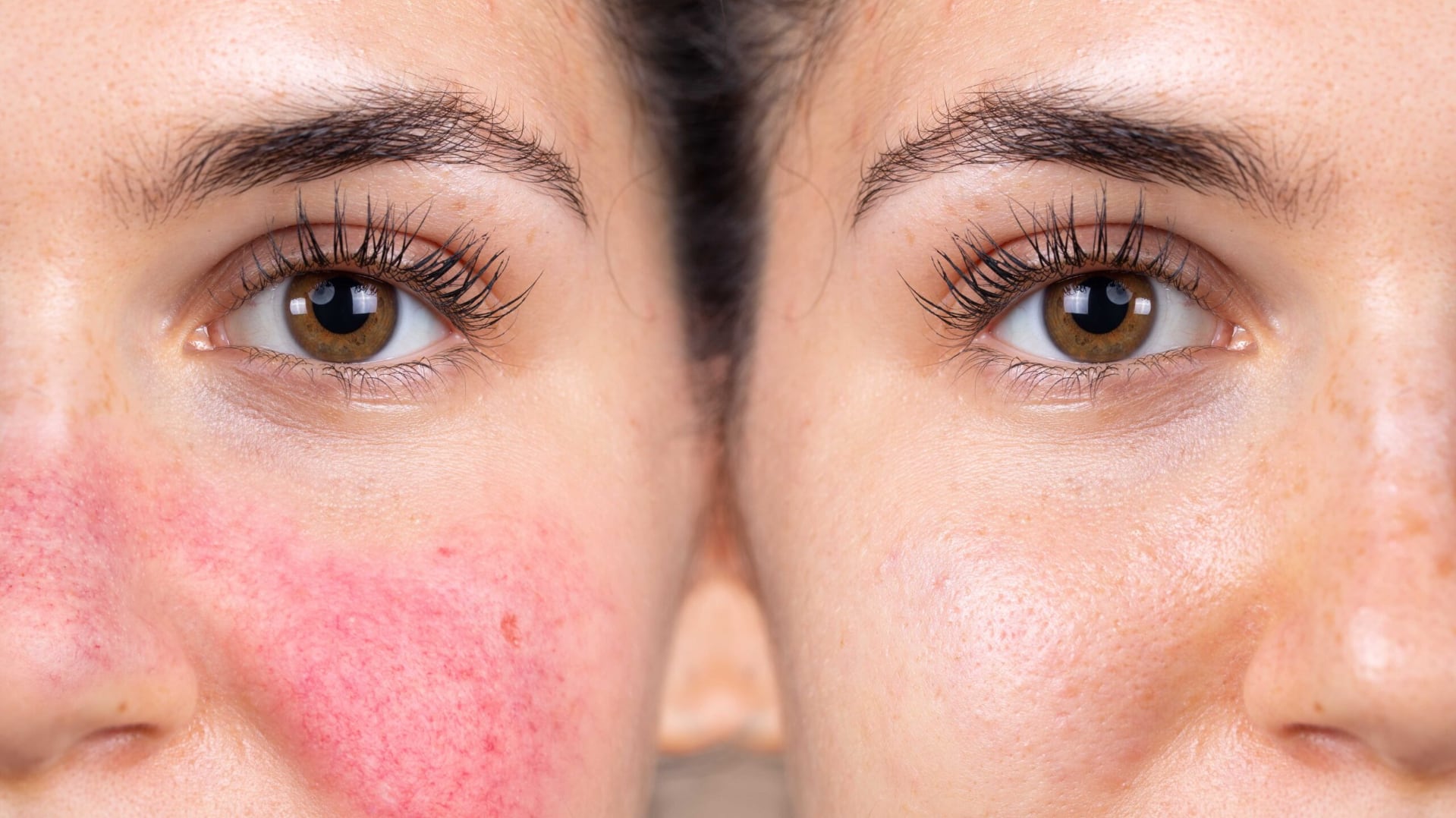The face is one of the most visible and expressive parts of the body, yet it is also prone to certain vascular (blood vessel–related) conditions. These conditions may appear as persistent redness, fine broken vessels, or patchy discolouration. While usually not dangerous to overall health, they can affect confidence, comfort, and skin health. Recognising them and knowing how to manage them is the first step toward healthier skin.
Common Vascular Conditions of the Face
1. Rosacea
Rosacea is a chronic inflammatory skin condition that commonly affects the cheeks, nose, chin, and forehead. It often presents as persistent redness, visible capillaries, and sometimes small acne-like bumps. Flare-ups can be triggered by heat, spicy foods, alcohol, or stress. While not harmful to the body, untreated rosacea may worsen over time and can cause burning or stinging sensations.
2. Broken Capillaries (Telangiectasia)
Broken capillaries are tiny dilated blood vessels visible beneath the skin’s surface. They often appear as red or purple threads, particularly around the nose and cheeks. They may develop due to sun exposure, ageing, rosacea, or even repeated skin irritation. Once formed, they usually do not disappear on their own.
3. Poikiloderma of Civatte
This condition typically affects the sides of the neck and lower cheeks. It shows as a mix of redness, brown pigmentation, and thinning skin, creating a mottled appearance. Long-term sun exposure is the main cause, and it is more common in fair-skinned individuals.
4. Spider Angiomas
These are small, central red spots with radiating blood vessels, resembling a spider’s legs. They are common on the face and upper chest. They may appear spontaneously or in relation to hormonal changes, liver disease, or sun damage.
5. Hemangiomas
These are benign collections of extra blood vessels. While more common in infants, adults may also notice small red vascular growths on the face or body, known as cherry angiomas.
Why Are These Conditions Important?
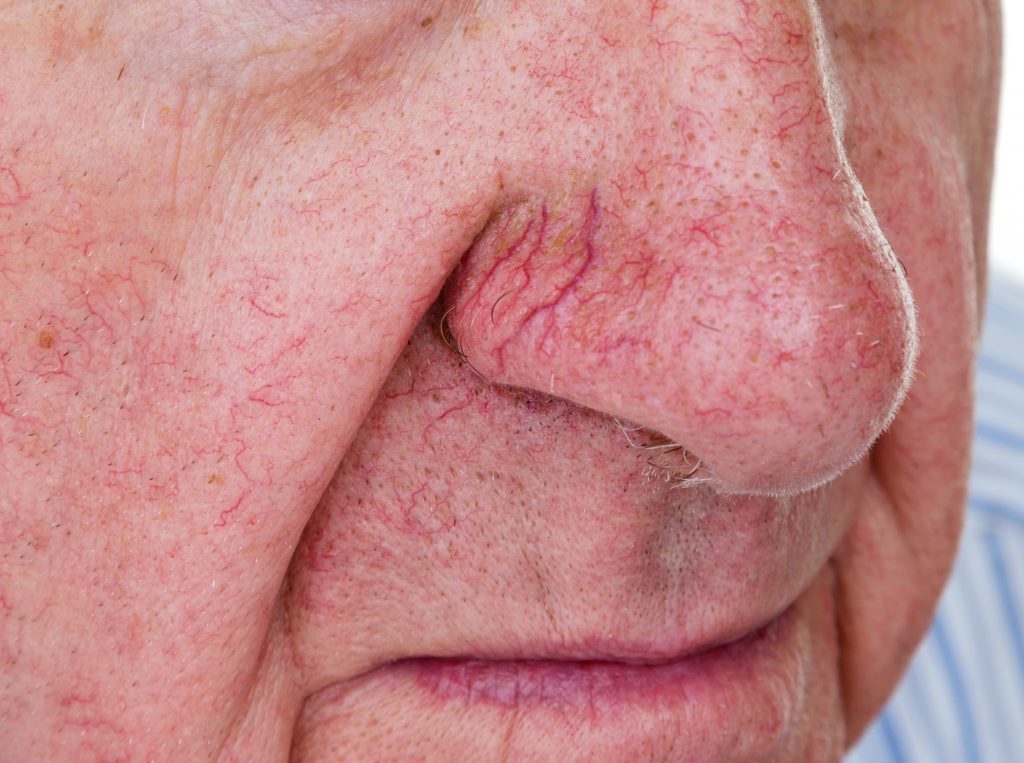
Although vascular skin problems are typically benign, they matter for several reasons:
- Aesthetic and psychological impact: Visible redness or broken vessels may affect self-confidence.
- Symptom relief: Some conditions, such as rosacea, cause burning, stinging, or flushing discomfort.
- Underlying health clues: In rare cases, vascular changes may signal systemic conditions such as hormonal imbalance or liver issues.
- Progression risk: Without management, some problems (like rosacea) can worsen over time.
Treatment Options
Lifestyle & Preventive Care
- Sun protection: Daily use of sunscreen is the single most effective preventive measure.
- Avoiding triggers: Limiting alcohol, hot drinks, spicy foods, and extreme temperature exposure can reduce flare-ups.
- Gentle skincare: Avoid harsh scrubs, strong acids, or irritating products.
Medical & Aesthetic Treatments
- Topical therapy: Prescription creams (such as metronidazole or azelaic acid for rosacea) can reduce inflammation and redness.
- Oral medications: For more severe rosacea, oral antibiotics or low-dose isotretinoin may be prescribed.
- Laser and light-based treatments: Vascular lasers (e.g., pulsed dye laser, Nd:YAG laser) and intense pulsed light (IPL) are highly effective in targeting broken capillaries, rosacea redness, poikiloderma, and spider angiomas.
- Electrocautery or radiofrequency: Occasionally used for individual broken vessels or angiomas.
- Camouflage makeup: Specialised green-tinted primers and concealers can neutralise redness temporarily.
Nd:YAG Laser Treatment: A Closer Look
The Nd:YAG (neodymium-doped yttrium aluminium garnet) laser operates at a wavelength of 1064 nm, allowing it to penetrate deeper into the skin compared with other vascular lasers such as the pulsed dye laser (PDL, 595 nm). This makes it particularly effective for larger or deeper vessels that lie beneath the skin’s surface, such as those on the cheeks, nose, or in resistant cases of telangiectasia.
How It Works
The laser emits a highly focused beam of light that targets oxyhaemoglobin, the red pigment within blood vessels. The absorbed energy converts to heat, causing the vessel walls to coagulate and collapse. Over time, the body reabsorbs these treated vessels, leading to a clearer appearance.
Benefits
- Effective for deep and resistant blood vessels.
- Suitable for a variety of vascular problems, including rosacea telangiectasia, broken capillaries, spider angiomas, and poikiloderma.
- Minimal downtime compared to surgical approaches.
- Can be safely used on different skin types when performed by an experienced clinician.
What to Expect
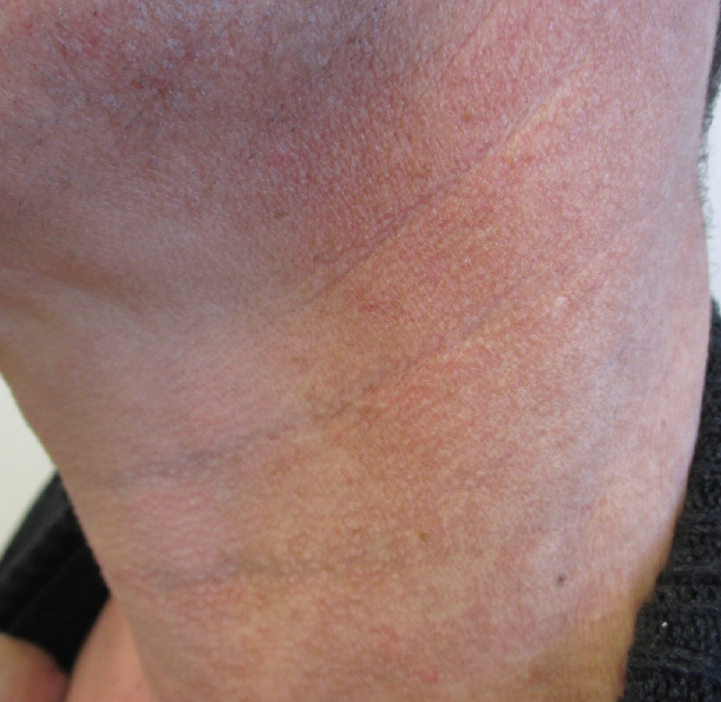
- Procedure time: Usually 15–45 minutes, depending on the treated area.
- Sensation: Patients may feel a warm snapping or stinging sensation, but this is generally well tolerated.
- Downtime: Mild redness or swelling for 1–3 days is common. Makeup can usually be applied the following day.
- Results: Noticeable improvement may be seen after the first session, though multiple treatments (typically 2–4, spaced 4–6 weeks apart) may be required.
- Safety: The Nd:YAG is considered safe, but side effects such as temporary hyperpigmentation, bruising, or rare blistering may occur, particularly in darker skin tones if not adjusted correctly.
Comparison with Other Lasers
- Pulsed Dye Laser (PDL): Best for superficial redness and small vessels.
- KTP Laser (532 nm): Effective for very fine, superficial vessels.
- Nd:YAG Laser (1064 nm): Penetrates deeper, ideal for larger or stubborn vessels.
By combining different laser types, dermatologists can often achieve optimal results tailored to each individual.
When to Seek Professional Advice
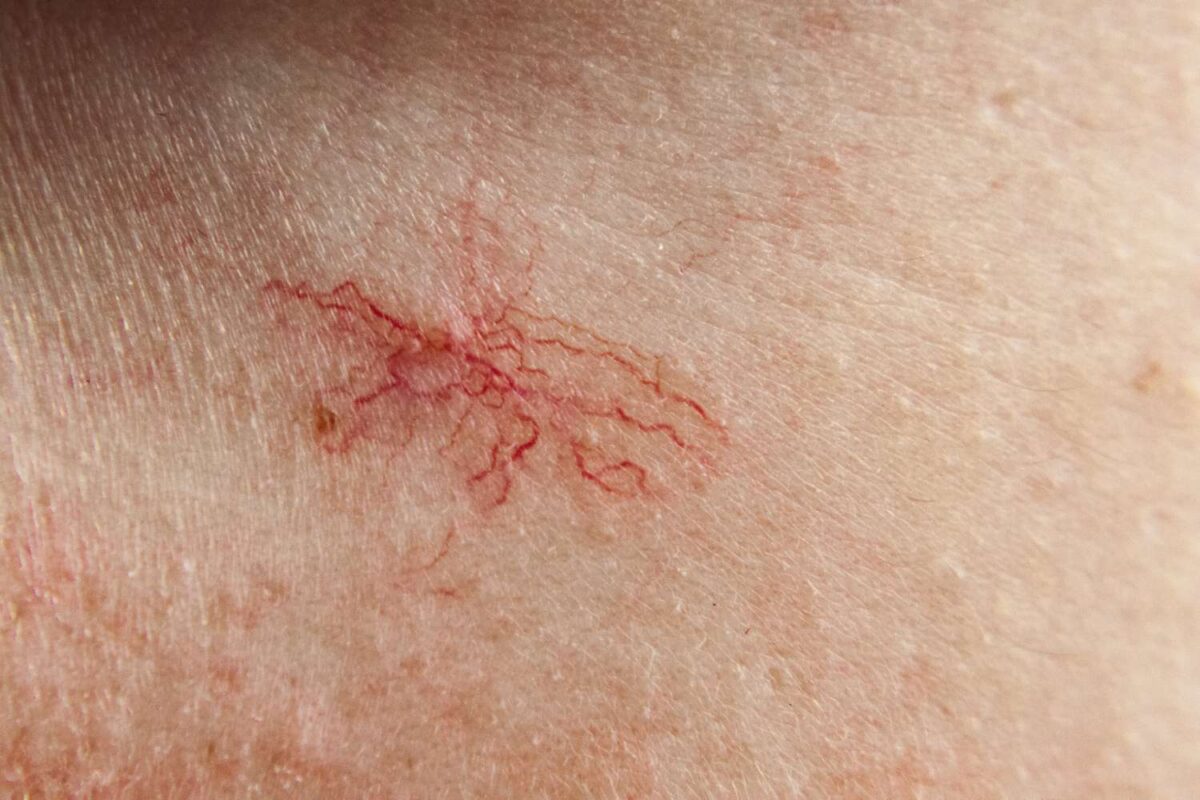
You should consult a dermatologist if:
- Redness persists despite lifestyle changes.
- New vascular spots appear suddenly and spread quickly.
- Flare-ups cause discomfort, swelling, or thickened skin.
- You wish to explore safe and effective aesthetic treatments.
Key Takeaway
Facial vascular conditions—whether rosacea, broken capillaries, poikiloderma of Civatte, or spider angiomas—are common and manageable. While they rarely pose medical danger, they can significantly affect quality of life. Fortunately, modern dermatology offers multiple options, from prevention and topical treatment to advanced laser therapies. With the right care, clearer, more comfortable skin is achievable.
Frequently Asked Questions
1. About Facial Vascular Conditions
Q: Are broken capillaries permanent?
A: Once capillaries are visibly broken or dilated, they rarely disappear on their own. However, they can be effectively treated with laser or light-based therapies.
Q: Is rosacea contagious?
A: No. Rosacea is not caused by bacteria or viruses and cannot be spread from person to person. It is an inflammatory condition influenced by genetics, immune response, and environmental triggers.
Q: Does poikiloderma of Civatte mean I have cancer?
A: No. Poikiloderma is a benign condition caused by long-term sun exposure and skin ageing. It is not precancerous, but sun protection is essential to prevent worsening and to reduce general skin cancer risk.
Q: Can lifestyle changes really help with facial redness?
A: Yes. Avoiding triggers such as alcohol, spicy food, hot drinks, and excessive sun can significantly reduce flare-ups in conditions like rosacea. Daily sunscreen is the most effective preventive measure.
Q: Are vascular spots like spider angiomas dangerous?
A: Most spider angiomas are harmless. However, if many appear suddenly, it may be advisable to check for underlying conditions such as liver disease.
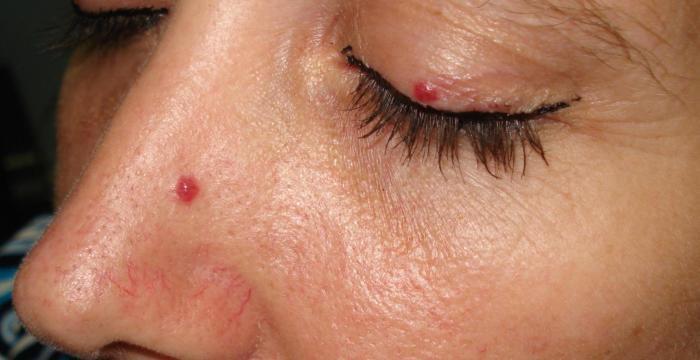
2. About Laser Treatments
Q: Is Nd:YAG laser painful?
A: Most patients describe the sensation as a warm snapping feeling, similar to a rubber band against the skin. A cooling device or numbing cream is often used to make the procedure more comfortable.
Q: How many laser sessions are needed?
A: This varies by condition and vessel size. Many people see improvement after one session, but 2–4 treatments spaced 4–6 weeks apart are typical for optimal results.
Q: Is there downtime after Nd:YAG laser?
A: Downtime is usually minimal. Temporary redness, swelling, or mild bruising may last 1–3 days. Makeup can usually be applied the following day.
Q: Can lasers be used on all skin types?
A: Yes, but with caution. Nd:YAG is safer for darker skin tones compared to other vascular lasers due to its longer wavelength. Settings should always be adjusted by an experienced dermatologist to minimise risks of pigmentation changes.
Q: How does Nd:YAG compare to other lasers?
A:
- Pulsed Dye Laser (PDL) is excellent for superficial redness and fine vessels.
- KTP (532 nm) is best for very small, surface vessels.
- Nd:YAG (1064 nm) penetrates deeper and is best for larger or stubborn vessels.
Sometimes, dermatologists combine lasers for the best results.
Q: Are the results permanent?
A: Treated vessels usually collapse permanently, but new vessels can form over time due to sun exposure, genetics, or underlying conditions. Maintenance treatments may be needed.
Q: Are there risks with vascular laser treatments?
A: Side effects are generally mild and temporary, such as redness, swelling, or bruising. Rarely, blistering, pigmentation changes, or scarring can occur if inappropriate settings are used. This is why treatment should always be performed by a qualified professional.
References
- Taub AF. Laser treatment of vascular lesions. Facial Plast Surg Clin North Am. 2011;19(2):335–351.
- Alexiades-Armenakas M. Long-pulsed Nd:YAG laser treatment of facial and leg telangiectasias. J Drugs Dermatol. 2003;2(4):401–406.
- Seckin D, et al. Efficacy of Nd:YAG laser in the treatment of facial telangiectasia. Dermatol Surg. 2006;32(5):681–686.
- Raulin C, Greve B. Nd:YAG laser in dermatology: basic principles and clinical applications. Lasers Med Sci. 2004;19(2):83–89.
- Babilas P, et al. Split-face comparison of pulsed dye laser and long-pulsed Nd:YAG laser in the treatment of facial telangiectasia. Lasers Surg Med. 2007;39(9):741–745.
